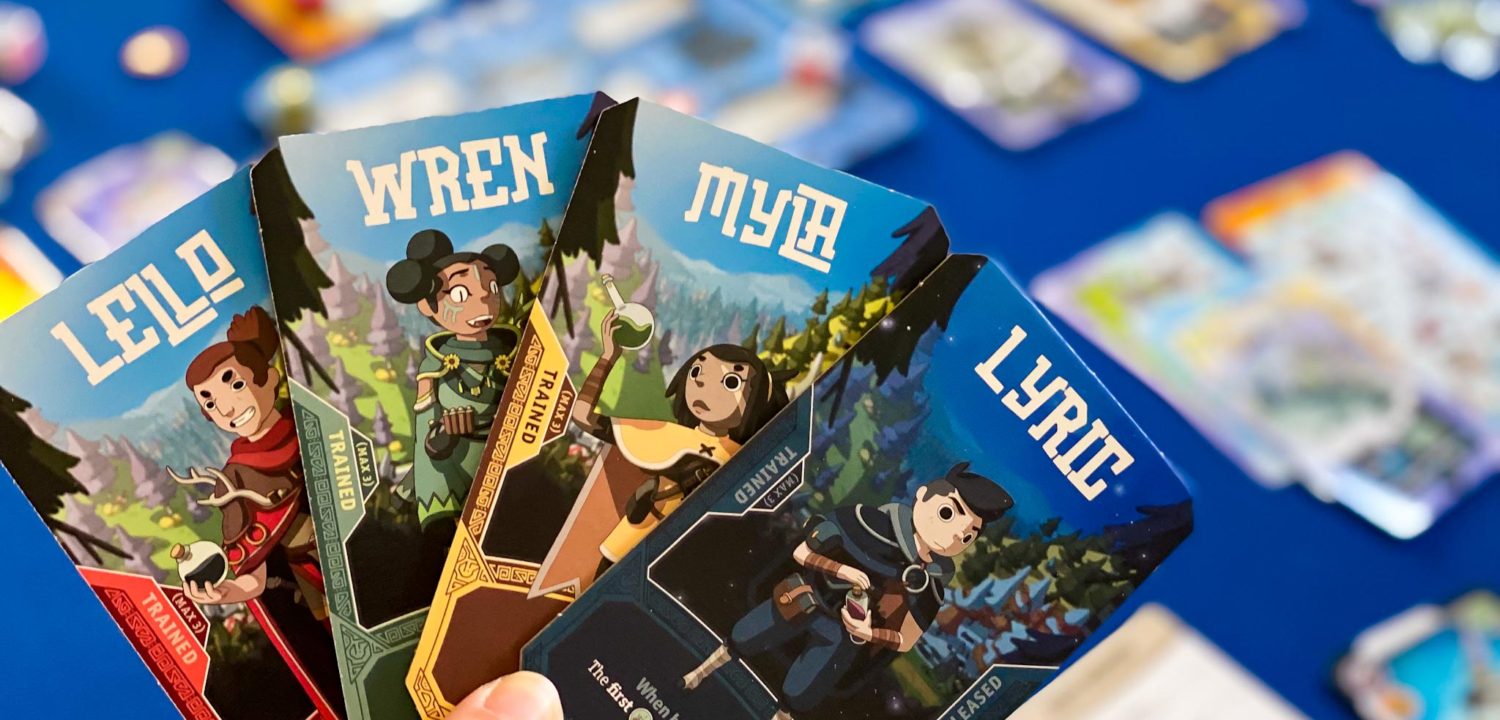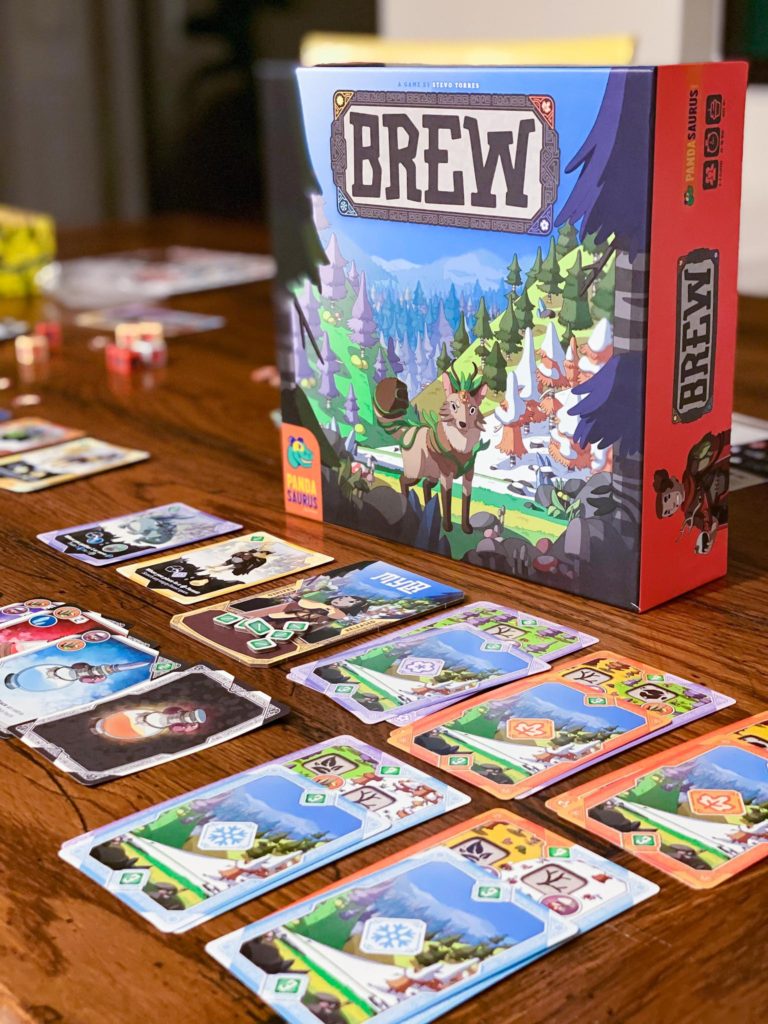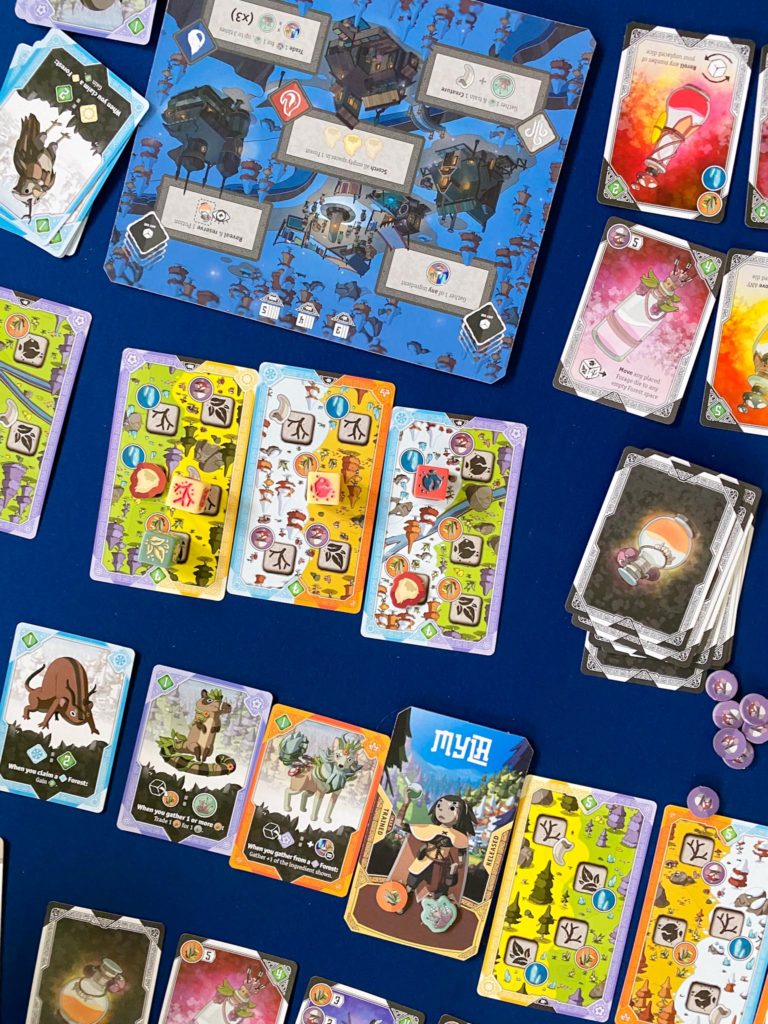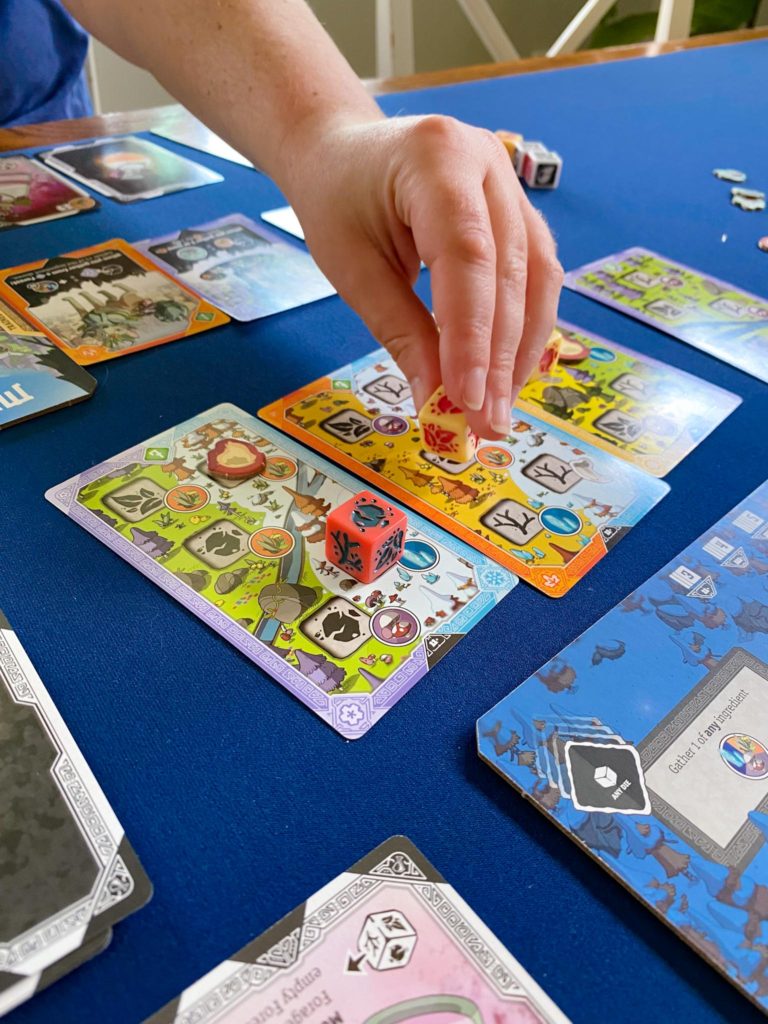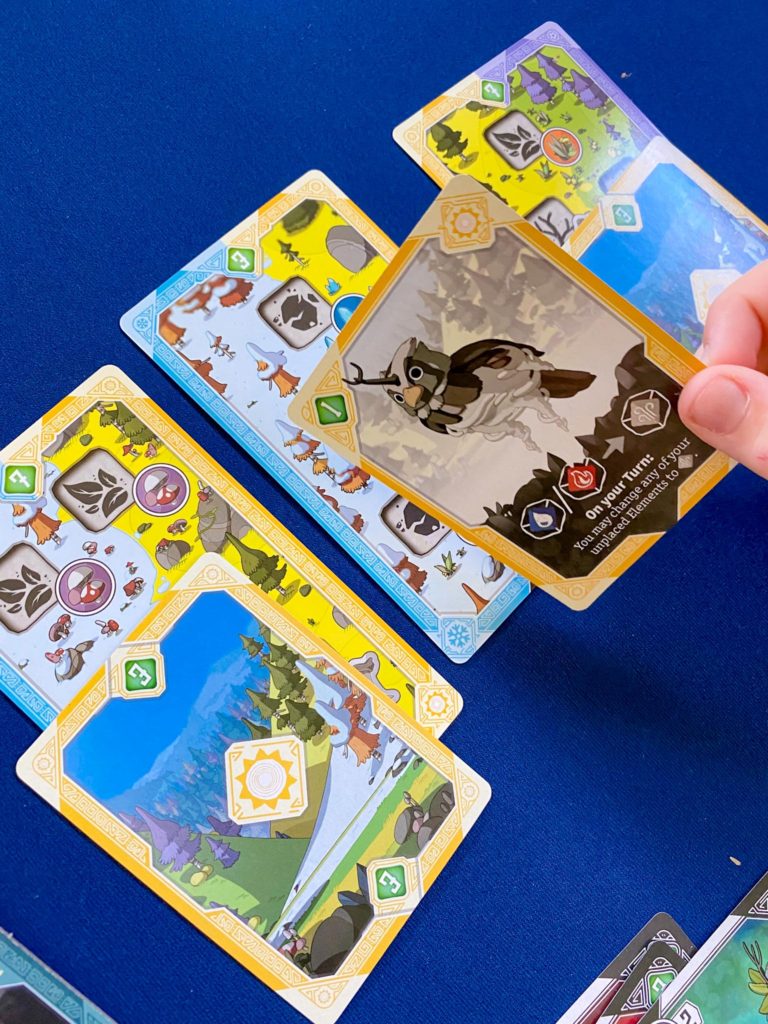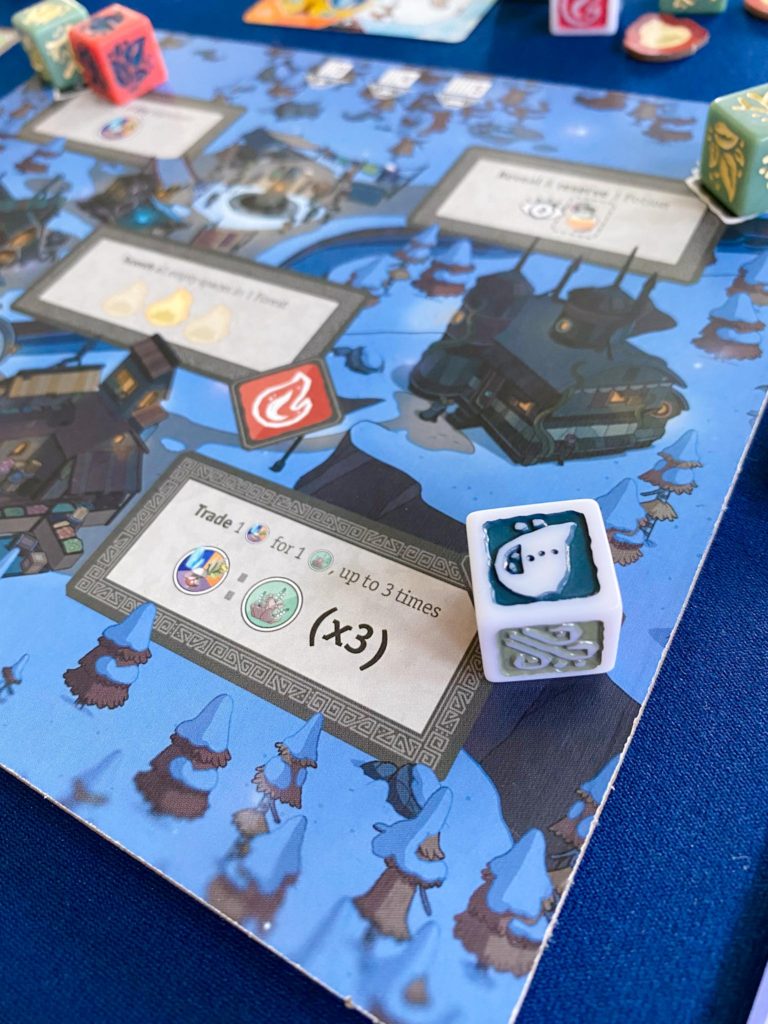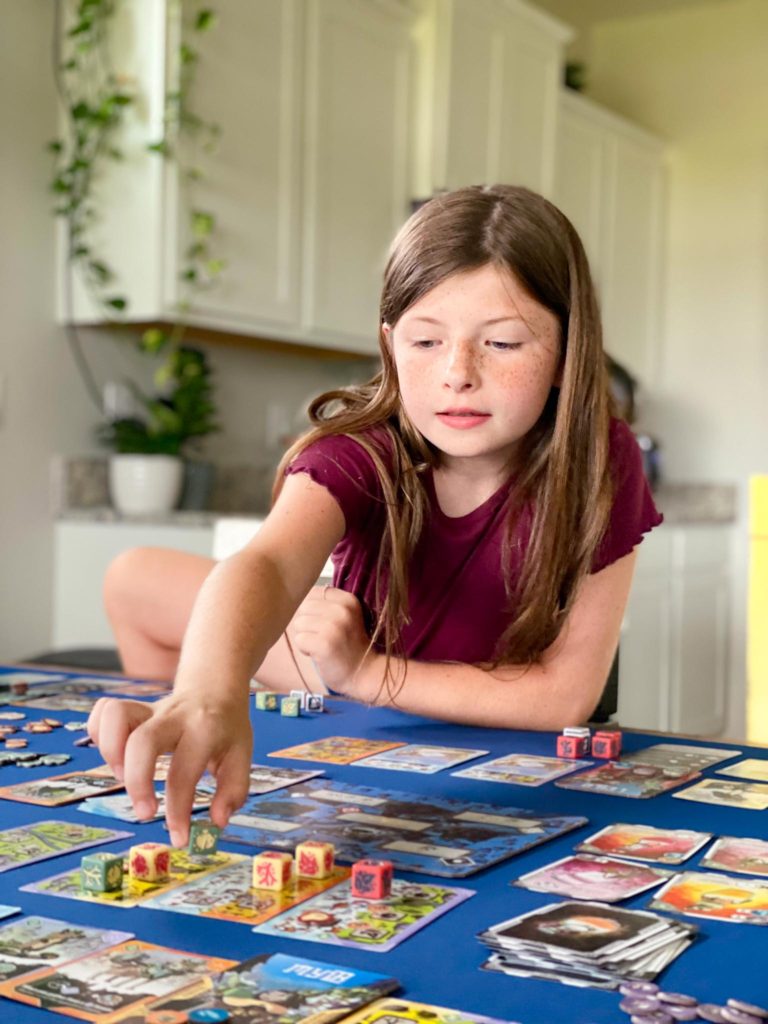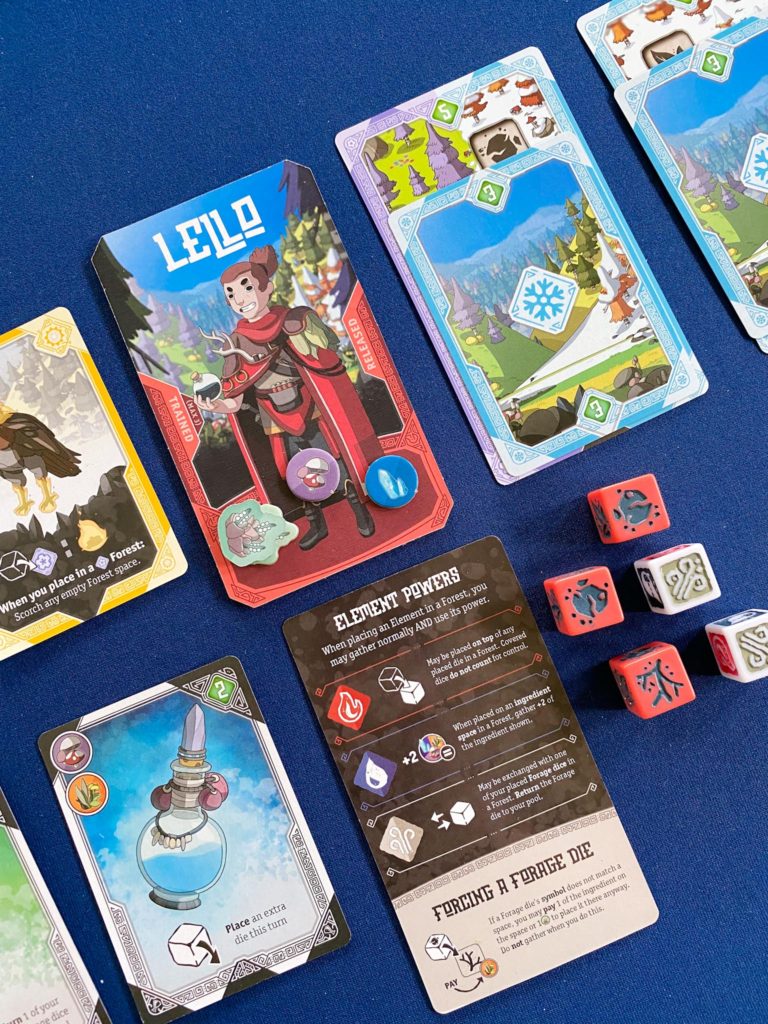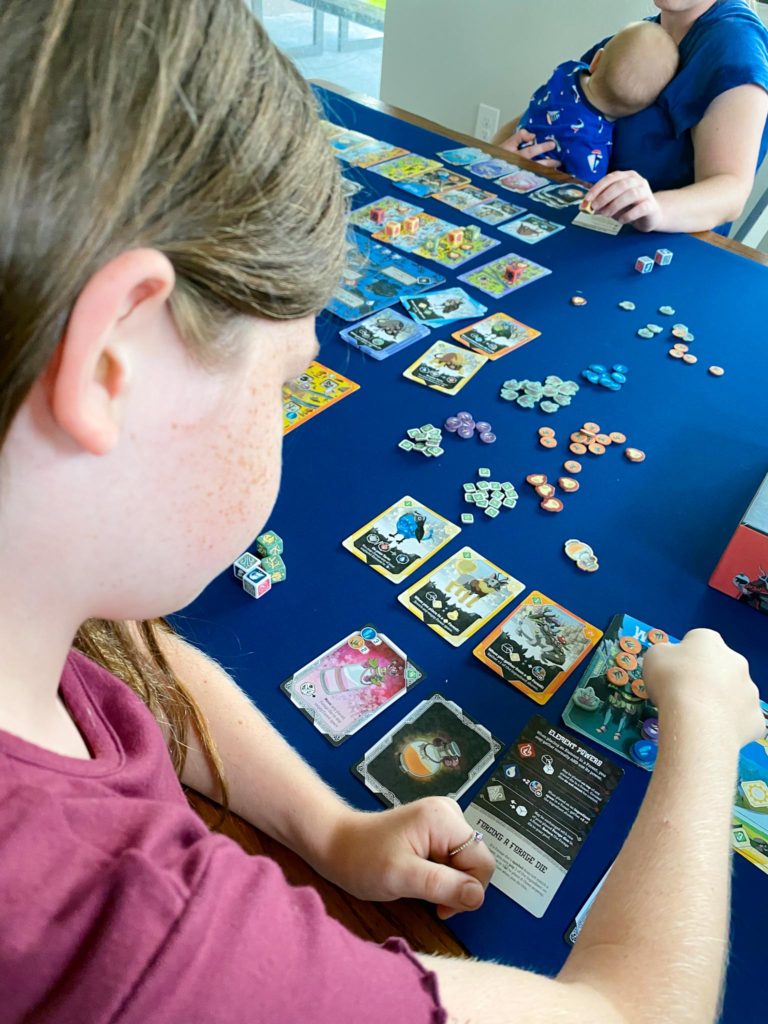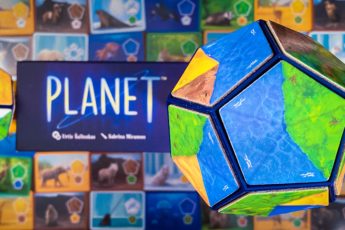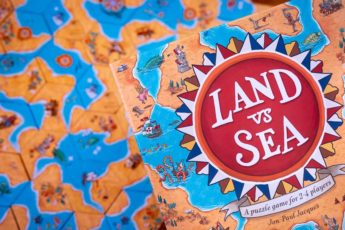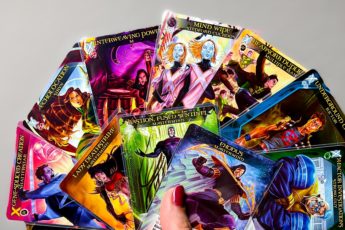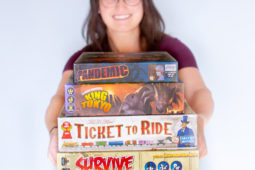Brew Review
It’s your job to bring balance to the forest in Brew. Use your dice to take control of the seasons, gather resources, brew potions, recruit creatures and best your opponents!
Brew has a lot of different game mechanics all rolled into one 45 minute game. We’re sharing our thoughts on whether we think it works and what you can expect from each play of Brew!
How do you play Brew?
Before giving you our thoughts, lets briefly go over what you’ll do in Brew.
(This is intended to be a brief overview, not teach the full rules.)
In Brew, you are trying to place dice strategically to gather potion ingredients, gain control of forests, and train magical creatures.
Brew is played over the course of four rounds.
To begin each round, players roll all six of their dice.
Players each have four forage dice and two elemental dice.
In clockwise order, players must place 1 die from their dice pool, they may brew one potion, and they may drink one potion. The three steps may be taken in any order, but a player must always place one dice from their pool.
Dice are played by being placed into the forests or in the village. Going to the forests lets you gather ingredients and train creatures. Visiting the village lets you take special actions to advance your game or set back your opponents. Typically when a die is placed, it remains there for the entirety of the round and no one else can go there. There are some potions you can brew that allow you to recall, remove, swap, or in other ways move dice. There are also ways to use the elemental dice to avoid that restriction. For example, the fire elemental power is that it can be placed on top of a die already in the forest. This not only gives the player that resource, but they also cancel out their opponents die from counting towards majority.
Once all dice have been placed, players claim forests. When counting for majority, elemental dice do not count. When you earn a forest, you take it into your player area. You can release creatures you’ve trained into forests you’ve claimed. You can choose at any time to release a creature into a forest. Creatures released into forests of the same season type as they are will earn more points.
After the round, you set up for the next by flipping the village board over to its opposite side (day/night,) taking back your dice, and revealing new forests.
After the fourth round, the game is over and players count up their points.
Points are earned from forests, released creatures, brewed potions, VP tokens, and leftover ingredients.
The player with the highest score is the winner.
What do we think?
Brew seamlessly weaves together dice, worker placement, resource management, and area control. It works really well. I love how each mechanic works beautifully together. First you roll your dice, then those dice become your workers which you’ll use to gather your needed resources, while gathering your resources, you’re having to consider which forests you want to get them from as you’re also trying to get majority to earn control of as many forests as possible. Highly strategic, highly fun!
What’s even better is we have found that there is no one way to win at Brew. We have had winners who focused on brewing potions, other games have seen winners who focused solely on releasing animals into the forests, and games where the victor dabbled in a bit of everything. This is always a huge plus for a game with me. No matter which strategy you pursue, it could prove fruitful and each are fun.
Gets Better Each Game
With every play, I enjoy Brew more and more!
As we have gotten to know the cards, creatures, and potions better, the game has become more fun each time. While there aren’t any show stopping moments to be found in Brew, it is still really enjoyable. There are a lot of clever ways to utilize the village and potions so that you can maximize your turn and build to a big move or two throughout the game which always feels satisfying.
There’s also a nice amount of player interaction without so much that you feel your game is determined by other players. Throughout the game you can see what other players are interested in — such as which potions they are going for based on their resources. If you draft a summer animal, your opponents might try to stop you from acquiring a summer season forest so you can’t release that animal for more points. While you can certainly work to keep someone from getting a card or make them spend an extra die or two they didn’t want to, Brew never seems too aggressive.
With so few rounds, every move you make matters, so you really have to weigh the choice between doing something to further your plan or another to hinder your opponent. It’s a fun layer to the strategy that helps keep things friendly while still providing plenty of organic player interaction.
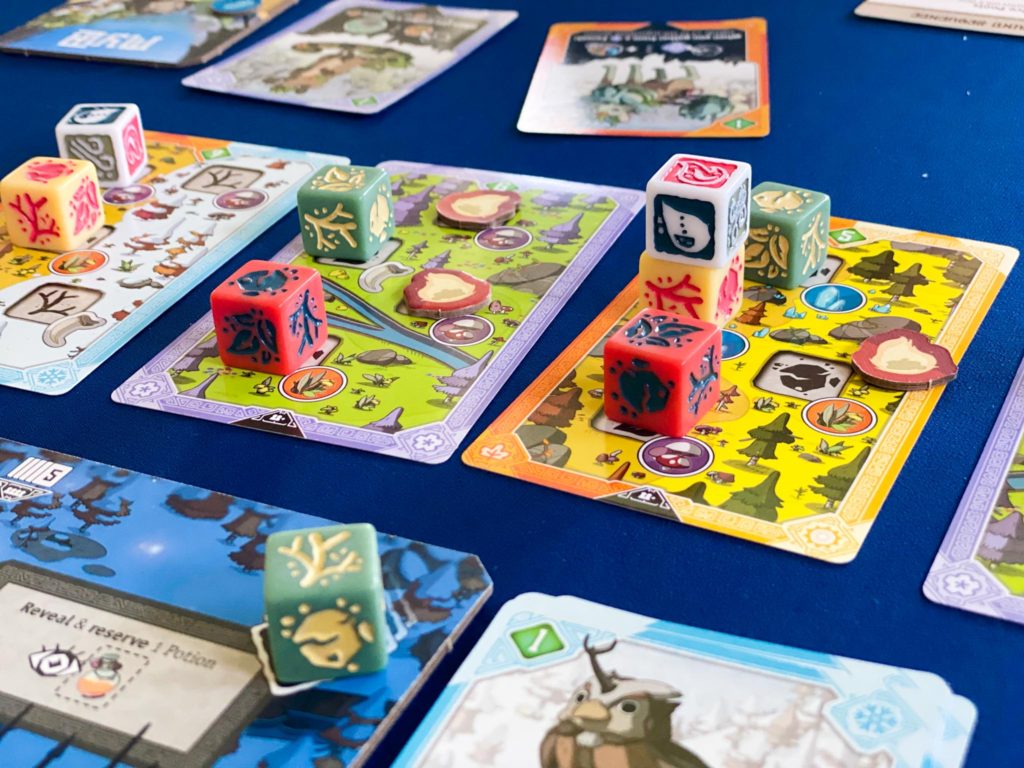
Mitigate Luck
I appreciate the elements in the game that help players mitigate their dice results. If you are one to shy away from the “luck of the dice” in games, Brew has many different ways to help you out. There are lots of potion cards that you can purchase to help you reroll, adjust your die results, or ignore the results entirely. As to be expected, these cards range from cheap to expensive so you’ll need to consider those costs when visiting the forests.
This all adds to the strategic decisions you have to make when playing, While the game can feel thinky at times, I love that it never feels punishing.
One really positive note for Brew is that it offers a lot of things for players to strategize over, while never leading to the helpless feeling of “what should I do now?” From the adults at the table to our 9 year old daughter, everyone always seemed to understand how each decision could benefit them. Deciding between them might take some time, but not because someone didn’t understand the game before them.
Theme
The fantasy theme is interesting and implemented into the mechanics well. The mechanics mix with the theme to build a narrative in the game that helps Brew be quickly and easily understood.
The creatures have a lot of great powers that not only align with the theme of the game but help players pursue and develop their strategies. If you are interested in going potion heavy, you can train creatures that will help you collect more resources every time you forage. If you want to win as many forests as possible, you can train creatures that give you bonus points when you do so. It’s thematic, strategic, and really helpful for players who play best when given a gentle nudge in deciding which strategies to pursue.
Components
Everything is gorgeous and well made. The art is vibrant and interesting without being distracting for play. I love that the character design feels unique from anything else we have in our gaming library. It helps to set it apart and be memorable.
How does it play with two?
We have really enjoyed Brew at two. However, as with most area control games, we find Brew to be slightly more interesting with 3+ players.
If you play primarily with two, one element of the game we found impressive was how cleverly the elemental dice worked.
While each player gets two elemental dice to use, once you place them into the forests, you don’t control them. Because of this, it feels as though you are playing with more than two players. Each elemental die you choose to forage with takes a spot away from your opponent, but also from you! You can’t use those dice when determining winning majority of each forest, so you need to consider that each time you use an elemental die.
Because the elemental dice function like this, it keeps our two player games tight and interesting.
Can kids play?
Brew is a great option for older kids around age 10. Each character in the game comes with a powerless side and a special power side. When we play with new players or our daughter, we don’t use the character’s variable powers. There’s a fair amount of strategy involved in Brew with both the need to focus on the current round — quickly making adjustments based on what your opponents are doing, while also not losing sight of your end game planning. There are enough layers here that it squeezes out the younger 8 and under crowd.
Summary
Mixed with the varied ingredients of dice rolling, worker placement, and area control, Brew is itself a delicious game potion.
Beautiful art and a unique theme combine well with a game full of strategy and that right amount of challenge to keep you coming back for more. Brew has an unassuming nature about it that grows on you more and more with each play. It’s a perfect game for those who like a quicker strategy game and will be enjoyed by those who prefer mild player interaction. Brew is quick to teach — making it a great choice for those in need of a lighter strategy game with more meat to it to introduce to new players at game night.
Brew is currently available for pre-order. When you preorder now, you can get the companion creature mini expansion for free! Visit Pandasaurus Games for more information.
Find this and all our top board game picks on our Amazon Storefront.
A special thank you to our friends at Pandasaurus Games for sending us a copy of Brew for review. As always our thoughts and opinions are our own and not influenced by any potions Pandasaurus may have brewed for us.
Game Info:
Title: Brew
2-4 Players Ages 10+
Designer: Stevo Torres
Artist: Jake Morrison, Andrew Thompson
Publisher: Pandasaurus Games


